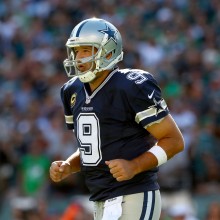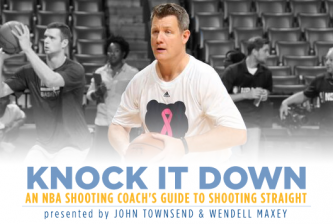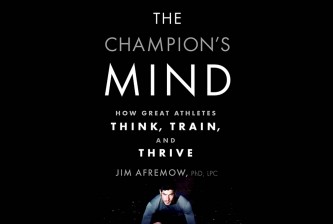Looking back on my experiences as a shooting coach in the NBA, there are a lot of players I have enjoyed working with from my time in Portland, Toronto and now Memphis. But there are four players in particular who I have learned a great deal from and who have helped influence my coaching philosophies these last eight years in the league and for significant reasons.
Steve Blake
Once I reached the NBA in 2007 with Portland after spending five years in the NBA D-League, I noticed one aspect of shooting that has impacted my philosophy and I continue to learn from. Players at this level are so good at shooting, but a lot of them do not do what past coaches have taught them about having your feet squared and having your shoulders squared to the basket and simply being on balance. You can’t put an NBA player into a box and say this is the right way or this is the wrong way. It’s an individual skill where you can cluster certain players together, but you have some guys that go against the grain.
For me, Steve Blake was one of those guys when it comes to shooting.
Dean Demopoulos — who was an assistant coach on Nate McMillan’s staff at the time — and I had extensive talks during the offseason and we talked a lot about having your feet match your elbow. I took that point of view and applied it to my coaching: I observed and watched shooters and a large number of players turn their feet when they shoot. Not only are they trying to get their feet to match their elbow, but they’re also putting their body in position to follow the basketball. That’s one thing that Steve Blake would do.
Steve would work hard and he shot the ball really well those two and-a-half years I was in Portland with the Blazers. It also helped having Brandon Roy there to set him-up for wide open three-pointers as Brandon drove and kicked to the corner. But Steve always turned his feet. So I took what Dean said and by watching Steve and that impacted my learning and teaching approach to shooting. That is the thing with being a shooting coach — how can you change the shot of one of the most accurate three-point shooters in the NBA at that particular time? You can’t change that. How can you say, “You have to square your feet”. You can’t. Instead, you have to take the form and habits of a player and learn from it. In the NBA and with an established player who is set in their ways, they are not going to change. So, as a coach, you have to change and adapt to them. That is a big part of what I have learned throughout my coaching career – to be able to pick up off of the subtle nuances, learn from them and apply them moving forward in my philosophy toward shooting. Now, if I work with a player and his feet are turned in his shooting stance, it’s not a big deal to me and I understand why.
As my coaching philosophy has gotten more refined throughout my career, Steve Blake helped play a part in that process.
Patty Mills
Two seasons into my time coaching with the Trail Blazers I started to work with Patty Mills. It was 2009 and Patty was a second-round pick coming out of St. Mary’s, where he was known as a speedster – a guard who raced from baseline to baseline and wore guys out with his speed. At that time he was not known as a shooter. It didn’t help that Patty broke his foot during an offseason practice that July right before the NBA Summer League in Las Vegas. Because of the injury, he couldn’t do anything. But the guy loves basketball and he loves being in the gym. So if we were scheduled for a team practice at 10:30 in the morning, Patty would come rolling through there at 8:30. Since I was in the gym early and he was in the gym early, we gravitated toward one another and started working together as his rehab process improved.
Patty and I always used the shooting machine when getting shots up and to help improve repetition with his shot and to get up a larger volume of shots. So we would work on a plan: how many shots, specific spots on the floor and then track those numbers over time by putting them into an Excel spreadsheet. He loved that and became addicted to seeing his improvement through the numbers. I can easily remember him getting 10,000 three-pointers up during those days we worked together. And the numbers didn’t lie – with his foot healed, Patty was assigned to the NBA D-League with the Idaho Stampede that December and finished with 38 points in his debut.
He went 7-10 from beyond the arc that game.
What I learned the most from Patty was about the scientific workings of a shooting wrist. He would always follow through off to the side when releasing the ball. I started tinkering with where he would put his hand on the ball and even put a strip of athletic tape on his wrist, starting at the index finger on his shooting hand and going over and past his wrist, up his forearm. With a black marker, I would then draw an arrow from his forearm down to that knuckle. The strongest part of your wrist is the outside, so it’s only normal that you would point your hand outward on your follow through. But showing him how to keep that wrist straight was awkward, but it proved to be effective in straightening out Patty’s shot. To see Patty now with San Antonio and experiencing success with the Spurs as a shooter means a lot to me, because I invested a lot of time in that kid and learned so much from working with him too.
Sergio Rodriguez
During the NBA lockout in the summer of 2011, I traveled to Spain to visit and work with Sergio Rodriguez. We worked out twice a day at the practice facility of Real Madrid, about an hour and-a-half each session for around two weeks. We mapped out a routine to work on his form and habits, but it’s with Sergio that I experimented with a more focused shooting strategy and developed what I call “pattern shooting”. Conducting those pattern shooting sessions with Sergio is very influential in how I work with players now.
Here is the reason why: Sergio really needed to improve his three-point shooting. We focused on limiting the number of threes he shot off of the dribble. When he shot off of the dribble, he jumped much better than when shooting stationary. I wanted him to jump the same way with his stationary shot, the same as he would coming off of the dribble. So we started on the right wing, he received a pass from the left wing and then I guarded him on defense. He would drive straight at me and pull up. Regardless if he made it or missed, he would rotate to his left and shoot a stationary shot from the top of the key. Make or miss, he would then rotate to his left and shoot a stationary shot from the left wing. The pattern started to take shape, but the only shots I would count were from the stationary positions. The importance that comes from this technique is also counting the pattern of makes, versus counting against misses. By tracking those patterns, you can then show the player a higher percentage of makes over a one day period, one week period and one month period.
This tactic also develops a strong mental approach within a player once they hear and see the numbers. You are getting the player mentally prepared for receiving positive reinforcement about the outcome of their shot and shooting workouts, which can carry over to game situations. They will have that confidence to shoot their shot. Today, I practice pattern shooting a lot with the players I work with and developing that technique came directly out of my education in working with Sergio Rodriguez that summer in Spain.
Ed Davis
Prior to joining the Memphis Grizzlies as Director of Player Development, I spent two seasons as the shooting coach with the Toronto Raptors. That is where I met Ed Davis, yet it was during the offseason after his rookie season where I had the opportunity to both learn from and work with Eddie.
Eddie was different compared to Steve, Patty and Sergio, because Eddie and I focused primarily on his free-throw shooting. We had to overhaul his shot – but that is something he wanted to do. I did not come to Eddie and suggest we change his shot form. And that point is huge, because if I came to a player who was not his contract year or on his way out of the NBA and say, “You need to overhaul your shot!”, they would probably never speak to me again.
Eddie, Dwane Casey and the Raptors’ management were all onboard with me flying from Phoenix – where my family and I were living at the time – to Richmond, Virginia during the offseason every week for one month. And during that time we focused a lot on ball placement. As a big man and left-handed, Eddie would start the ball low on the right side of his body by his hip, then lift the ball into his shooting form on the right side of his body and the ball would be on the right side above his head when he’d shoot. The guy is so athletic and he can move, so keeping the ball low on his right side was comfortable for him and carried over into his shooting form at the free throw line.
To start, we practiced a lot of form shooting – moving the ball into different positions before going into his shooting motion. We need to break his form down first. I would literally hold the ball in one position and have him take the ball out of my hands and go straight into his shot. I would then enforce mentally the changes were making by asking him, “That feels weird doesn’t it?”.
Overhauling a shot will feel weird, because it is so different. I would never suggest this technique was “better”. It was just different. And I would reiterated that over and over and over. Through this mental and physical repetition and showing him through video the changes, we eliminated that right side movement and kept the ball entirely on the left side of his body. It was not easy. It’s hard after a player is so comfortable with one particular form, to then change that form. We also worked on body placement at the free throw line and moved him over to the right, compared to centering his body toward the hoop. That made a huge difference as well with his form. Over a two to three day period, “different” became Eddie’s new free throw shooting form. He was comfortable and the motion was effective. That following season of 2011-12 in Toronto, Eddie went from being a 55% three throw shooter, to 67% from the line.
Working with Ed Davis that summer and then seeing the results that season, was one of the first times I started focusing motion: lifting the ball directly from the shooting side and then lining up your arm with the rim on your motion, all while at the free throw line.
One of the underlying themes in this “Knock It Down” project is how players are fighting against the results they want as a shooter compared to their motion. As a coach working in player development, your focus is on the motion versus the results. Once the motion is in place – your individual shooting motion – the results will take care of themselves.























